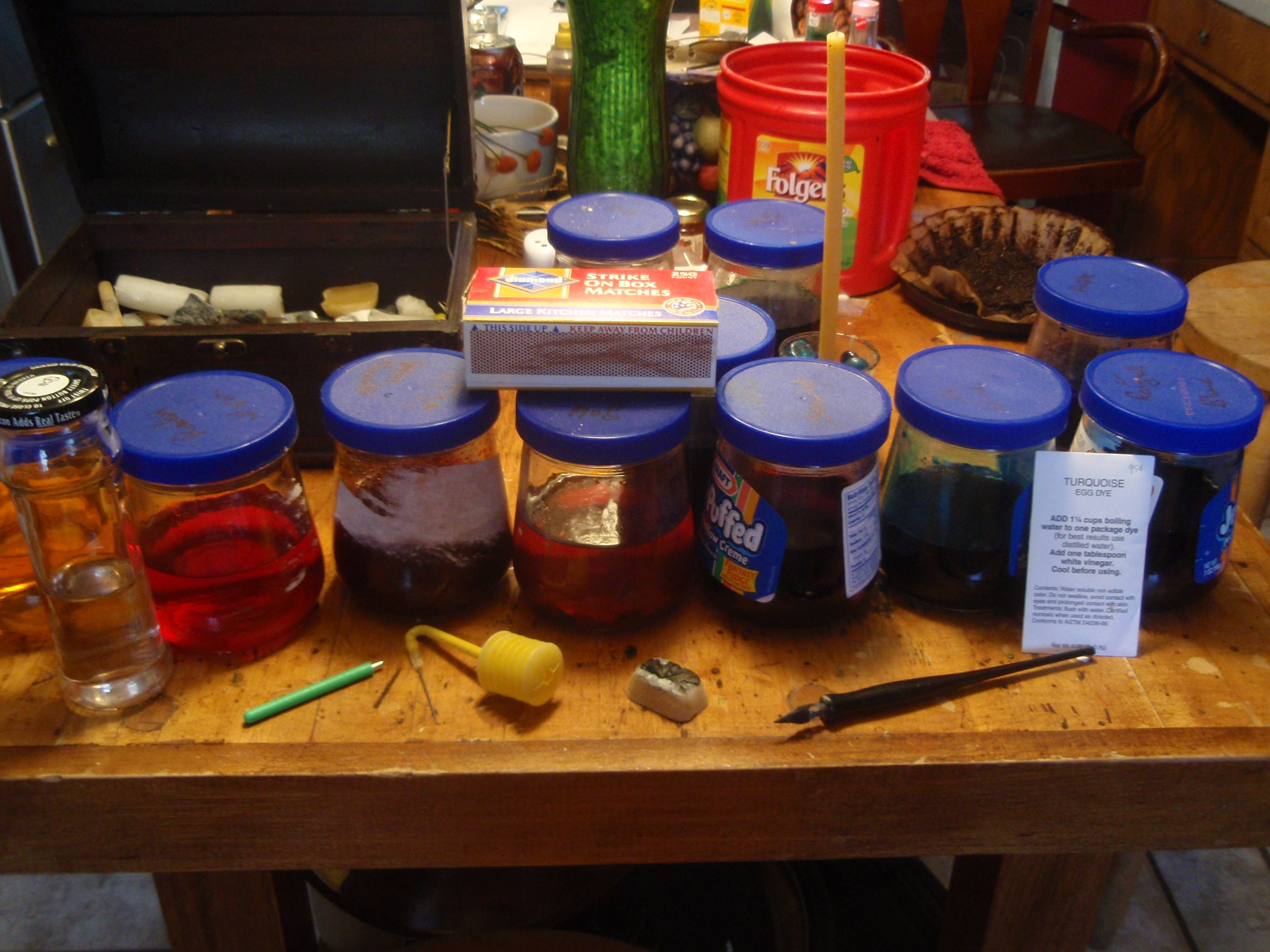I am somewhat behind on my Pysanki making this year. If I commit to one a day I should be able to come up with 26 before they are due. Our family has promised 36 so I hope the kids will be able to take up my slack. Fortunately Spring Break will occur before the due date, so maybe my talented college kids will find the time.
Here's my first four in the order of making them. So far I like #3 the best. I don't know if the blurriness is because of me, the camera, or the computer. They looked focused on the viewfinder, but not when I uploaded them.

These eggs have been cleaned with Charcoal Starter, but they have not yet been varnished, which really makes the colors pop.
There are good explanations of how to make Pysanki available to anyone who will buy a book or do a computer search. Last year I provided a link, but this year I'll try to explain it. The design is created by drawing lines or filling in shapes over the desired color with melted wax. The hardest thing to get used to, is that you create your design in opposite order from light to dark, so that the highlights come first. You start with a white egg that has been blown and cleaned through a drilled hole in the bottom. We use a German made drill and accordion "bellows" connected to a needle. The color will take better if the egg has been rinsed with distilled water and vinegar.
Many people pencil in the egg divisions which are at least horizontal and vertical into 8 parts. Most eggs will start with these 3 lines being covered with wax by using a calligraphy stylus that has been heated in a candle flame, usually beeswax, and loaded from a separate beeswax block. Then the loaded stylus is reheated to melt the wax which for a few seconds will cover the line that is gone over on the egg, before it has to be reheated in the flame. The first egg above shows that I blocked in the cross and the wheat with wax while the egg was still white. Then the egg is usually dipped in yellow, depending on the design. What is desired to stay yellow is then drawn or blocked in. The design becomes increasingly obscured by wax with each layer of color, so the end result will be a complete surprise, but I get ahead of myself. After the yellow is blocked in, the egg is dipped in the next color, which was red in the third egg. After the red was blocked in, that egg was dipped in black. After the last color has taken, the egg is carefully held over the candle, not too long or it could scorch or even explode, and not too short or the wax wont come off cleanly. The wax is wiped off with a Kleenex. All the steps make a tedious process, especially for the non-detail oriented like me, but the unveiling makes it worth it. It usually turns out better than I think because I am aware of mistakes when I am drawing on the wax, but I can't predict how forgiving the colors will be until the wax is removed. But then when one's egg is held next to a truly experienced and skilled pysanki maker's, one is not so impressed with ones self.

A brief statement about the dyes, they come from the Ukraine, I think, in powdered form in an envelope to be added to 1 1/4 cups of distilled, boiling water. Most also require a tablespoon of vinegar, which can be re-added later if the dye stops taking to the egg. Most of our people use Jet Puff Marshmallow Cream jars as they are a good width to make sure the egg gets covered when dipped. Since the eggs are hollow, they float, so a spice jar is usually placed over it to keep it down for the necessary few minutes until the desired color is achieved. By the way, one must remember to seal the hole at the bottom of the egg with melted wax so that it will not fill up with dye and continuously drip even after you think you've drained it and resealed it. A most frustrating experience.
Like reading books, Pysanki making is a very worthwhile pursuit, but I have to really put my determination hat on to begin every day. Reading and writing blogs takes no such determination, but is like falling off a log. Reading and writing well, now I do have to exert effort to not be totally reckless, which I'm sure I don't apply enough of which to do.
No comments:
Post a Comment